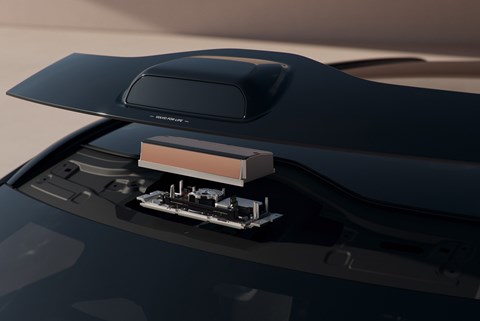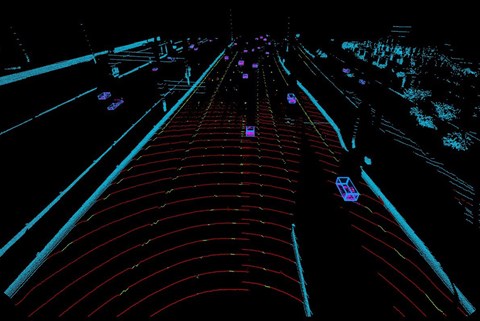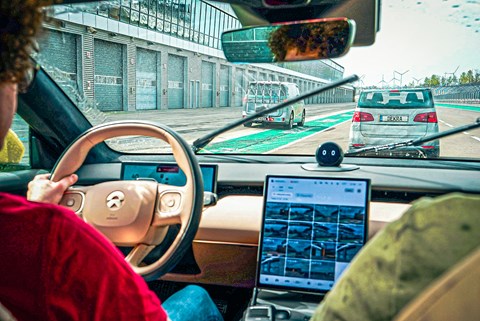► What is lidar technology?
► It works to similar principles as radar
► Could be the key to more reliable assisted driving
That multi-coloured image you’re looking at isn’t a scene from a remake of The Matrix. This is what lidar (light detection and ranging) ‘sees,’ and the data provided is – according to many automotive engineers – crucial for the next level of driver assistance and safety technology.
The tech is already seeing use in other industries; it’s regularly employed for high-resolution maps and geological surveys, and even NASA is looking into using it for precision navigation and safe landing on other planets.
Back down on Earth, use of lidar is still in its infancy. Where it is fitted, it’s usually as well as cameras and radar, not instead of. It’s been under development for years, but it’s expensive.
Elon Musk isn’t a fan, dismissing it as a ‘crutch’. He favours ever-improving cameras and vast processing power on Tesla cars, which use entirely vision-based systems.

Even so, we’re starting to see production cars that have the technology attached. As well as Volvo’s new EX90 and the Polestar 3, every car from Chinese brand Nio has the technology fitted as standard in cars including the ET5; Lotus EVs like Eletre and Emeya use it. And more car companies are looking to introduce the technology; Mercedes-Benz and Toyota both intend to use lidar on their next-generation EVs.
Why? Because, according to its advocates, it’s the crucial next step when it comes to a car’s awareness of its surroundings. Nio, for example, boasts that its driver-assistance systems and Nio Pilot semi-autonomous technology are unaffected by weather that a camera-based system would struggle with. That’s because lidar uses infrared.
And camera systems don’t have the depth perception that lidar offers, say Nio engineers. Nor can cameras see as far into the distance, making a measurable difference to how quickly a car can prepare for traffic problems ahead.

‘Lidar makes cars see, and really see,’ says Prof Dr Peter Fröhlich, from the Deggendorf Institute of Technology. ‘Lidar doesn’t get distracted by light reflections. It works at night or in adverse conditions. The vision of cars becomes supercharged, and can see much more than you can.’
Junwei Bao, CEO of Nio’s lidar partner Seyond, says: ‘That’s why you’re seeing many reported accidents from the likes of Tesla, or other car makers that use purely vision-based ADAS [advanced driver assistance] systems.’ Tesla had to recall nearly two million vehicles in the US in December 2023 to update the Autopilot system, to make sure its drivers are paying attention when it’s active.
Some car makers’ enthusiasm for lidar is based on its self-driving potential, while others focus more on its safety benefits, and stress that it can’t work miracles.

Åsa Haglund, head of the Volvo Safety Centre, says: ‘You could fit lidar to any car and it would do absolutely nothing to the [crash or safety] performance if you don’t know what to do with the data it gathers.’
Volvo senior safety technical leader Mikael Ljung Aust adds: ‘If you look at the intent of what that technology symbolises, if there is an elevation in performance when it comes to something like crash avoidance, then of course we’re on board. But when you introduce new technology, it has to come first on some cars, but not on every car out there, as there needs to be a learning period.
‘The benefit of lidar is that you can carry learnings from it onto cars that don’t have it applied.’